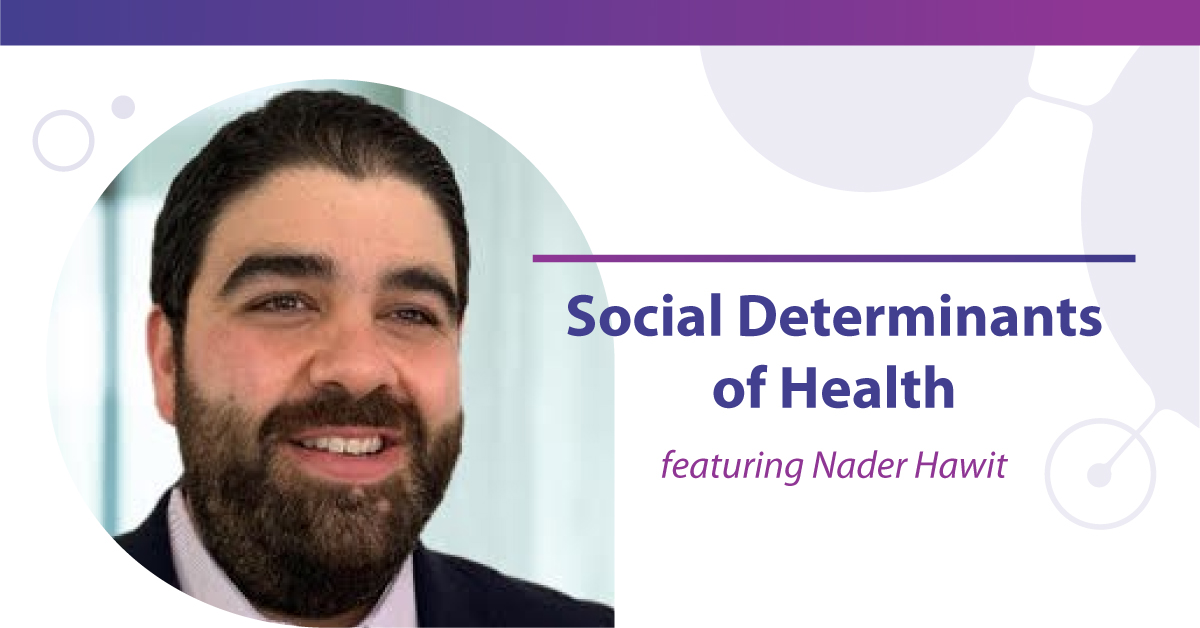
Social Determinants of Health: Community and Social Contact
Each of the five segments of social determinants of health (SDoH) are shaped by political, social, and economic factors. It’s crucial to not only understand the differences between each segment, but also how they intertwine and loop together. This month, Senior Director of Digital Products Nader Hawit is back to explain the fourth segment: community and social contact.
Community
Even if we understand the importance behind the segments of social determinants—such as healthcare quality, education, and food stability—without a community, there is no force to rally behind the importance of access to such resources. Healthy People 2023 says, “People’s relationships and interactions with family, friends, co-workers, and community members can have a major impact on their health and well-being.”
Unfortunately, it’s a fact that many people face challenges they simply cannot control, like unsafe neighborhoods, discrimination, or accessibility to important necessities like food and healthcare. But positive relationships at home, work, and in their community can help reduce negative impacts of social determinants. When individuals lack a sense of belonging and engagement within their community, regardless of the tools accessible to them, it often results in social isolation.
Social Contact
A Kaiser Family Foundation study performed in 2018 says 22% of U.S. adults say they often or always feel lonely. They continued by saying they lack companionship and feel isolated from others in their community. According to the study, socially isolated people—especially seniors—face higher mortality rates stemming from dementia, stroke, and coronary heart disease. They are also prone to depression, high blood pressure, and cognitive decline, impacting their social determinants of health and prolonged health issues.
Social cohesion could be the first stepping stone in understanding this segment of SDoH, which is defined as the strength of relationships and sense of solidarity among members of a community. In a report published by the U.S. Department of State, it is noted that social inclusion and access to opportunity for all allows this social determinant to be addressed and made important. It says, “In order to achieve shared prosperity and long-term security in the region, it is essential that all members of our society are able to…have equal opportunity to participate in economic activity.”
MTM Health’s Priority
MTM Health prioritizes our members. We believe that every member deserves access to transportation that can positively affect their five segments of social determinants, and that allows them to access their community to face social isolation head on. Here are some examples on how MTM Health helps our members address social isolation:
- We transport members to entertainment and social activities.
- Through partnerships with nursing homes and community care facilities, MTM Health coordinates shuttle services for residents to community activities.
- To help seniors stay connected with their friends and family, we provide transportation to family events and gatherings.
- MTM Health works with non-profit and community organizations to provide members with transportation to and from community events.
A healthy lifestyle starts in our homes, schools, neighborhoods, and communities. Facilitating access within our community helps impact social isolation, mental health, and more. The final segment of the five-spoked wheel, economic stability and employment, helps elevate the other four segments, leading to better mental and physical health. Tune in next month as Nader dives into economic stability and employment.
Categories
- Alaina Macia (37)
- Employee Wellness (19)
- ETO Newsletter (64)
- Events (70)
- MTM Health eNewsletter (83)
- News & Events (685)
- Technology (2)
- Tradeshows (57)
- Uncategorized (17)
- Webinars (15)
